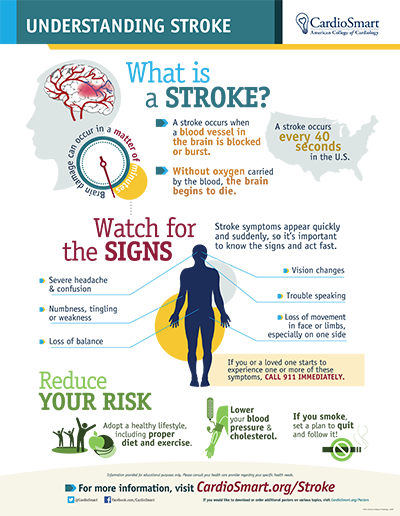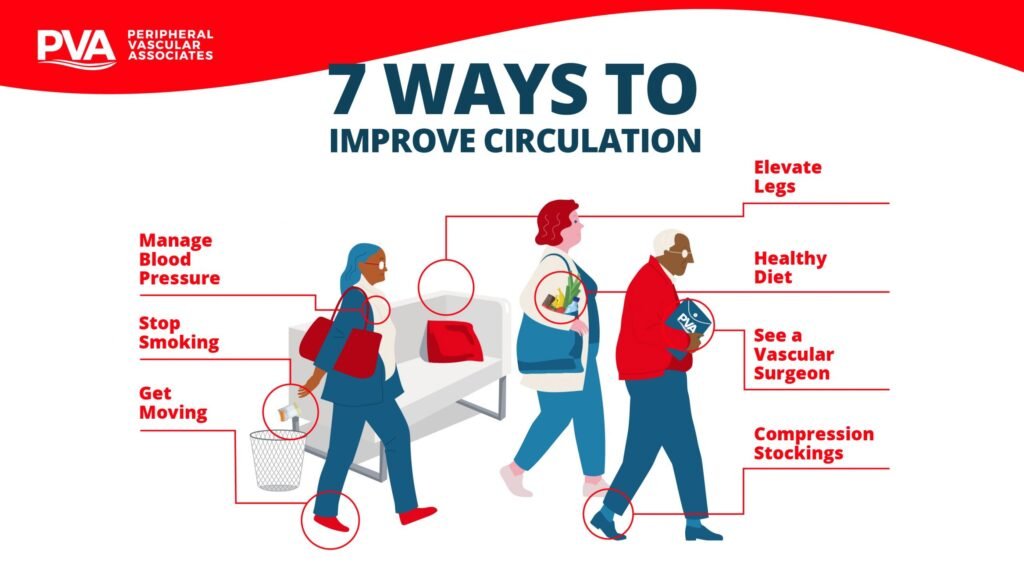Strokes prevention are a leading cause of death and disability worldwide, with over 13 million people suffering from a stroke each year. While there are many factors that can contribute to the risk of having a stroke, such as age, genetics, and medical history, there are also steps that can be taken to help prevent strokes from occurring. One important aspect of stroke prevention is creating a safe and healthy home environment. In this blog post, we will explore various solutions to help prevent strokes at home, including reading about stroke prevention solutions, answering commonly asked questions, and implementing effective strategies.
Contents
- 1 Reading about Stroke Prevention Solutions for Home Environments
- 2 Answers to Commonly Asked Questions on Stroke Prevention Solutions for Home Environments
- 3 Effective Stroke Prevention Strategies for the Home
- 4 Home-Based Solutions for Reducing Stroke Risk
- 5 Essential Reading for Stroke Prevention in Home Environments
- 6 Frequently Asked Questions and Solutions on Stroke Prevention for the Home
- 7 Evidence-Based Solutions for Stroke Prevention at Home
- 8 Practical Steps to Prevent Strokes in Your Home
- 9 Key Findings and Recommendations for Stroke Prevention in Home Environments
Reading about Stroke Prevention Solutions for Home Environments

Reading about stroke prevention solutions for home environments is an essential step in understanding how to create a safe and healthy living space. There are numerous resources available, both online and in print, that provide valuable information on stroke prevention. Here are some recommended readings:
“The Stroke Recovery Book” by Kiersten Adkins
This book provides a comprehensive guide to recovering from a stroke and preventing future ones. It covers topics such as diet, exercise, medication, and lifestyle changes that can help reduce the risk of having a stroke. The author, Kiersten Adkins, is a registered nurse and stroke survivor who shares her personal experience and expertise in this informative and easy-to-read book.
“Stroke Prevention: How to Prevent a Stroke” by Dr. David Brownstein
Written by a renowned physician, this book offers practical advice on how to prevent strokes through natural methods. It covers topics such as nutrition, supplements, and lifestyle changes that can help lower the risk of having a stroke. Dr. Brownstein also discusses the importance of early detection and treatment of underlying health conditions that can increase the risk of strokes.
Table: Foods to Include in Your Diet for Stroke Prevention
| Food | Benefits |
|---|---|
| Fruits and vegetables | Rich in antioxidants and nutrients that can help lower blood pressure and reduce inflammation |
| Whole grains | High in fiber, which can help lower cholesterol levels |
| Fish | Contains omega-3 fatty acids that can help reduce the risk of blood clots |
| Nuts and seeds | Good sources of healthy fats and antioxidants |
| Olive oil | Contains monounsaturated fats that can help lower cholesterol levels |
“The Stroke Prevention Diet” by Dr. Janet Brill
This book focuses on the role of diet in preventing strokes. It provides a detailed guide on what to eat and what to avoid for optimal stroke prevention. The author, Dr. Janet Brill, is a registered dietitian and cardiovascular nutritionist who shares her expertise on how to make healthy food choices to reduce the risk of having a stroke.
List: Lifestyle Changes for Stroke Prevention
- Quit smoking
- Limit alcohol consumption
- Exercise regularly
- Manage stress
- Get enough sleep
- Maintain a healthy weight
- Monitor blood pressure and cholesterol levels
- Treat underlying health conditions such as diabetes and heart disease
Answers to Commonly Asked Questions on Stroke Prevention Solutions for Home Environments

As with any health concern, there are many questions surrounding stroke prevention. Here are some commonly asked questions and their answers:
Q: Can strokes be prevented?
A: Yes, strokes can be prevented through various lifestyle changes and medical interventions. By managing risk factors such as high blood pressure, high cholesterol, and diabetes, and making healthy lifestyle choices, the risk of having a stroke can be significantly reduced.
Q: What are the warning signs of a stroke?
A: The most common warning signs of a stroke include sudden weakness or numbness on one side of the body, difficulty speaking or understanding speech, sudden vision changes, dizziness, and severe headache. If you experience any of these symptoms, seek immediate medical attention.
Q: Can diet and exercise help prevent strokes?
A: Yes, a healthy diet and regular exercise can play a significant role in preventing strokes. Eating a diet rich in fruits, vegetables, whole grains, and lean proteins, and engaging in physical activity for at least 30 minutes a day can help lower the risk of having a stroke.
Effective Stroke Prevention Strategies for the Home
Creating a safe and healthy home environment is crucial for stroke prevention. Here are some effective strategies to consider:
Install Handrails and Grab Bars
Falls are a leading cause of strokes, especially among older adults. Installing handrails and grab bars in areas such as the bathroom, stairs, and hallways can help prevent falls and reduce the risk of having a stroke.
Keep Your Home Clutter-Free
Cluttered spaces can increase the risk of falls and accidents. Make sure to keep your home tidy and free of any tripping hazards. Consider decluttering and organizing your living space to create a safer environment.
Paragraph: Tips for Decluttering Your Home
- Start small and focus on one room at a time.
- Get rid of items you no longer need or use.
- Use storage solutions such as bins, shelves, and baskets to keep things organized.
- Donate or sell items that are in good condition but no longer serve a purpose in your home.
- Regularly clean and declutter to maintain a clutter-free living space.
Ensure Adequate Lighting
Poor lighting can make it difficult to navigate around the house, increasing the risk of falls and accidents. Make sure to have adequate lighting in all areas of your home, especially in high-traffic areas and staircases.
Home-Based Solutions for Reducing Stroke Risk

Aside from creating a safe and healthy home environment, there are also specific home-based solutions that can help reduce the risk of having a stroke. These include:
Blood Pressure Monitoring
High blood pressure is a significant risk factor for strokes. By regularly monitoring your blood pressure at home, you can keep track of any changes and take necessary steps to manage it. There are many affordable and easy-to-use blood pressure monitors available on the market.
Healthy Cooking Methods
The way we cook our food can also play a role in stroke prevention. Avoid using unhealthy cooking methods such as deep-frying and opt for healthier alternatives like grilling, baking, or steaming. This can help reduce the intake of unhealthy fats and lower the risk of high cholesterol levels.
Paragraph: Healthy Substitutes for Unhealthy Cooking Methods
- Instead of deep-frying, try baking or roasting.
- Use non-stick pans to reduce the need for added oils.
- Steam vegetables instead of boiling them to retain more nutrients.
- Use herbs and spices to add flavor instead of salt and butter.
Regular Physical Activity
Regular physical activity not only helps maintain a healthy weight but also has numerous benefits for stroke prevention. It can help lower blood pressure, improve cholesterol levels, and reduce stress and anxiety. Find activities that you enjoy and make them a part of your daily routine.
Essential Reading for Stroke Prevention in Home Environments

Aside from the recommended readings mentioned earlier, here are some other essential resources for stroke prevention in home environments:
“Stroke Prevention: The Ultimate Guide” by Dr. David Spence
This book provides a comprehensive guide to understanding the causes of strokes and how to prevent them. It covers topics such as diet, exercise, medication, and lifestyle changes that can help reduce the risk of having a stroke.
“The Stroke Recovery Handbook” by Glen Gillen
Written by an occupational therapist, this book offers practical advice on how to recover from a stroke and prevent future ones. It includes exercises, tips, and strategies for managing daily activities and improving overall quality of life after a stroke.
“Stroke Prevention in Your Home” by the National Stroke Association
This resource provides valuable information on how to create a safe and healthy home environment for stroke prevention. It includes tips on home modifications, fall prevention, and managing risk factors such as high blood pressure and cholesterol.
Frequently Asked Questions and Solutions on Stroke Prevention for the Home

Here are some more frequently asked questions and their solutions for stroke prevention in home environments:
Q: How can I make my home safer for someone who has had a stroke?
A: After a stroke, it is essential to make necessary modifications to the home to accommodate any physical limitations. This may include installing handrails and grab bars, removing tripping hazards, and making sure there is adequate lighting.
Q: Can stress increase the risk of having a stroke?
A: Yes, chronic stress can contribute to high blood pressure and other risk factors for strokes. Managing stress through relaxation techniques, exercise, and seeking support from loved ones can help reduce the risk of having a stroke.
Q: Are there any supplements that can help prevent strokes?
A: While there is no specific supplement that can prevent strokes, some studies have shown that omega-3 fatty acids, vitamin D, and magnesium may have a positive impact on reducing the risk of having a stroke. However, it is always best to consult with a healthcare professional before taking any supplements.
Evidence-Based Solutions for Stroke Prevention at Home

There is a growing body of evidence supporting various solutions for stroke prevention in home environments. Here are some evidence-based strategies to consider:
Lowering Sodium Intake
High sodium intake has been linked to an increased risk of high blood pressure, which is a significant risk factor for strokes. By reducing the amount of salt in your diet, you can help lower blood pressure and reduce the risk of having a stroke.
Managing Diabetes
Diabetes is a significant risk factor for strokes, and managing it is crucial for stroke prevention. By monitoring blood sugar levels, taking medication as prescribed, and making healthy lifestyle choices, the risk of having a stroke can be significantly reduced.
Paragraph: Tips for Managing Diabetes
- Monitor blood sugar levels regularly.
- Take medication as prescribed by your doctor.
- Follow a healthy diet and exercise regularly.
- Get regular check-ups with your healthcare provider.
- Seek support from a diabetes educator or support group.
Quitting Smoking
Smoking is a significant risk factor for strokes, and quitting smoking is one of the most effective ways to reduce the risk. By quitting smoking, you not only lower your risk of having a stroke but also improve your overall health and well-being.
Practical Steps to Prevent Strokes in Your Home

Aside from the strategies mentioned earlier, here are some practical steps that you can take to prevent strokes in your home:
Regularly Check Smoke Alarms
In case of a fire, smoke alarms can save lives. Make sure to regularly check and replace batteries in your smoke alarms to ensure they are functioning correctly. It is also recommended to have a fire extinguisher in your home and know how to use it.
Keep Emergency Numbers Handy
In case of an emergency, it is essential to have emergency numbers readily available. This includes the number for your local emergency services, your doctor, and any other important contacts. Keep these numbers in a visible and easily accessible place in your home.
Have a Plan in Case of a Stroke
If you or a loved one is at high risk of having a stroke, it is essential to have a plan in place in case of an emergency. This may include knowing the signs and symptoms of a stroke, having emergency contact information readily available, and knowing the fastest route to the nearest hospital.
Key Findings and Recommendations for Stroke Prevention in Home Environments

After exploring various solutions for preventing strokes at home, here are some key findings and recommendations:
- Creating a safe and healthy home environment is crucial for stroke prevention.
- Reading about stroke prevention solutions can provide valuable information and guidance.
- Regularly monitoring blood pressure and managing underlying health conditions can help reduce the risk of having a stroke.
- Making healthy lifestyle choices such as eating a balanced diet, exercising regularly, and quitting smoking can significantly lower the risk of strokes.
- It is essential to have a plan in place in case of an emergency.

Conclusion
Strokes are a serious and potentially life-threatening condition, but there are steps that can be taken to help prevent them. By creating a safe and healthy home environment, regularly monitoring blood pressure and managing underlying health conditions, and making healthy lifestyle choices, the risk of having a stroke can be significantly reduced. We hope this blog post has provided valuable insights and resources for stroke prevention in home environments. Remember, prevention is always better than cure, so take action now to protect yourself and your loved ones from the devastating effects of strokes.



